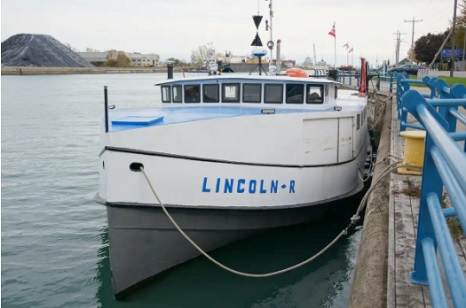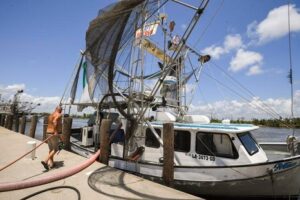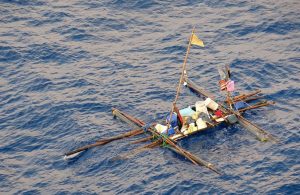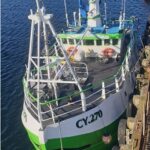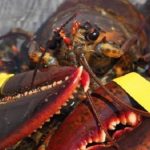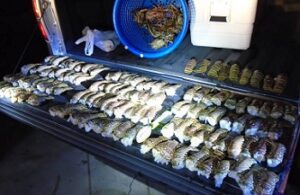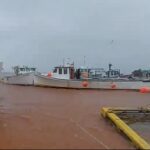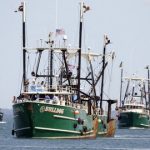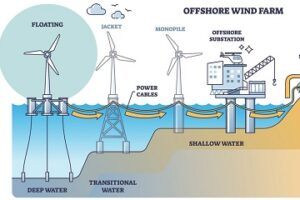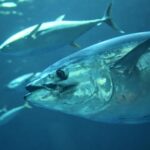Tag Archives: Lake Superior

Big Abe’s Net
One calm September morning in 1971, Big Abe LeBlanc got ready to go fishing on Lake Superior. This was something he often did in secret, under the cover of darkness, hiding from the Michigan Department of Natural Resources. But on this particular day, Big Abe called the DNR before he left. “I just remember him saying that, you know, ‘This is where I’ll be, and if you want me, come get me,’” said his son, Sonny LeBlanc. It was 1971. And Big Abe, who’s Ojibwe, was preemptively turning himself in for two crimes, at least according to Michigan law. The first crime: commercial fishing without a license. The second: fishing with illegal equipment. After Big Abe hung up, he went out on the lake, set his nets and waited for the officers to come. What happened next changed fishing in the Great Lakes forever. more, >>CLICK TO READ<< 09:45
After a dramatic decline, lake trout have recovered in most of Lake Superior
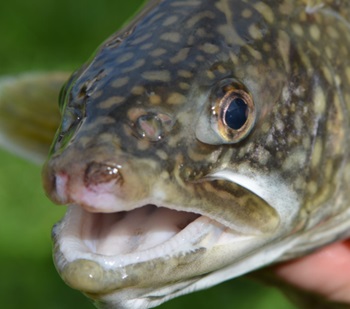 After decades of work, fishery managers say lake trout have fully recovered in most of Lake Superior after the invasive, fish-killing sea lamprey decimated their numbers. The Lake Superior Committee of the Great Lakes Fishery Commission, which is made up of state, tribal and Canadian natural resource managers, announced the population’s recovery Wednesday. The lake trout population in Lake Superior dropped to dramatically low levels during the mid-1900s due to overfishing and an invasion of sea lampreys, eel-like parasites that suck the blood of their hosts. The parasitic fish spread to the Great Lakes from the Atlantic Ocean, invading Lake Superior by 1938. more, >>CLICK TO READ<< 11:03
After decades of work, fishery managers say lake trout have fully recovered in most of Lake Superior after the invasive, fish-killing sea lamprey decimated their numbers. The Lake Superior Committee of the Great Lakes Fishery Commission, which is made up of state, tribal and Canadian natural resource managers, announced the population’s recovery Wednesday. The lake trout population in Lake Superior dropped to dramatically low levels during the mid-1900s due to overfishing and an invasion of sea lampreys, eel-like parasites that suck the blood of their hosts. The parasitic fish spread to the Great Lakes from the Atlantic Ocean, invading Lake Superior by 1938. more, >>CLICK TO READ<< 11:03

The Day Lake Superior Gave Up Her Dead
The Jones family of Cornucopia, Wisconsin, was well known as both boatbuilders and commercial fishermen on Lake Superior. Thomas Senior and his two sons, Thomas Jr. “Coonie” and Emery, made good money in the fall of 1924 when the price of herring was unusually high.The price of trout was also high at the time, and the men knew they could make even better money if only they could fish trout on the Big Lake after herring season 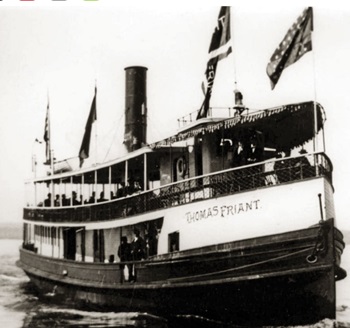 closed. Overwinter fishing on the open Lake had never been done out of the small harbors of the South Shore. Another problem was, the Joneses didn’t have a proper boat capable of staying out beyond the pack ice for any length of time. Enter the Thomas Friant, a 96-by-18-foot abeam, 81-ton wooden hulled ferry built in Grand Haven, Michigan, in 1884. The passenger-hauling Friant had been converted to a massive – for that era – fishing tug. photos, more, >>CLICK TO READ<< 09:06
closed. Overwinter fishing on the open Lake had never been done out of the small harbors of the South Shore. Another problem was, the Joneses didn’t have a proper boat capable of staying out beyond the pack ice for any length of time. Enter the Thomas Friant, a 96-by-18-foot abeam, 81-ton wooden hulled ferry built in Grand Haven, Michigan, in 1884. The passenger-hauling Friant had been converted to a massive – for that era – fishing tug. photos, more, >>CLICK TO READ<< 09:06
Lake Superior Herring Are Thriving for the First Time in Decades
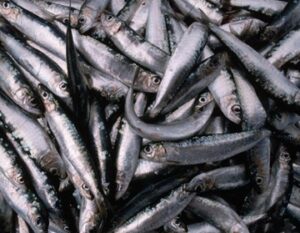 It’s an historic boom year for herring in Lake Superior, as a record number of the crucial fish appear to have survived to age one — a major developmental milestone. After decades of disappointing numbers, the huge swell of herring — a key facet of Lake Superior’s food web — could help bolster the ecosystem and fishing industry in the world’s second-largest freshwater lake. More herring can lead to healthier populations of those fish, a boon for commercial and recreational fishers. “It’s gonna change things for a long time to come in Lake Superior,” said Goldsworthy. >>click to read<< 12:14
It’s an historic boom year for herring in Lake Superior, as a record number of the crucial fish appear to have survived to age one — a major developmental milestone. After decades of disappointing numbers, the huge swell of herring — a key facet of Lake Superior’s food web — could help bolster the ecosystem and fishing industry in the world’s second-largest freshwater lake. More herring can lead to healthier populations of those fish, a boon for commercial and recreational fishers. “It’s gonna change things for a long time to come in Lake Superior,” said Goldsworthy. >>click to read<< 12:14
Soo Tribe says it will appeal Great Lakes commercial fishing deal
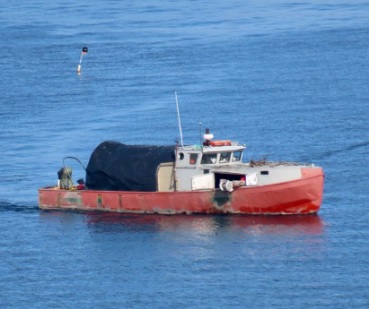 The Sault Ste. Marie Tribe of Chippewa Indians says it will appeal an agreement struck between four other tribes, federal regulators and state of Michigan to govern Great Lakes commercial and sport fishing. The tribe said Monday, Oct. 9 that it would appeal the agreement, which was approved by a federal judge on Aug. 24, with the U.S. Sixth Circuit court of appeals by Oct. 23. The tribe did not join the agreement, which was reached in December between the state and federal governments, and the Bay Mills Indian Community, the Grand Traverse Band of Ottawa and Chippewa, the Little River Band of Ottawa and Little Traverse Bay Bands of Odawa. The agreement divvies up fishing rights in parts of lakes Michigan, Huron and Superior; extending until 2047 a longstanding regulatory framework which has been under negotiation since it expired in 2020. The deal covers Great Lakes that fall within Michigan waters in which the tribes reserve fishing rights per the 1836 Treaty of Washington. >>click to read<< 18:29
The Sault Ste. Marie Tribe of Chippewa Indians says it will appeal an agreement struck between four other tribes, federal regulators and state of Michigan to govern Great Lakes commercial and sport fishing. The tribe said Monday, Oct. 9 that it would appeal the agreement, which was approved by a federal judge on Aug. 24, with the U.S. Sixth Circuit court of appeals by Oct. 23. The tribe did not join the agreement, which was reached in December between the state and federal governments, and the Bay Mills Indian Community, the Grand Traverse Band of Ottawa and Chippewa, the Little River Band of Ottawa and Little Traverse Bay Bands of Odawa. The agreement divvies up fishing rights in parts of lakes Michigan, Huron and Superior; extending until 2047 a longstanding regulatory framework which has been under negotiation since it expired in 2020. The deal covers Great Lakes that fall within Michigan waters in which the tribes reserve fishing rights per the 1836 Treaty of Washington. >>click to read<< 18:29
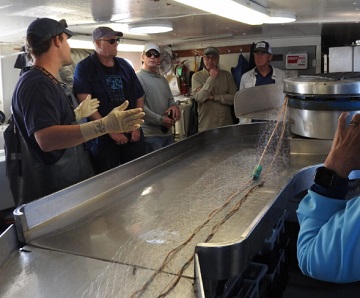
Natural Connections: The Lake Superior Fishery in Wisconsin Waters
The boat engine rumbled and machinery whirred as a gillnet rose from the depths of Lake Superior. Captain Ross Lind managed the throttle so that the 55-foot-long gillnet-tug-turned-research-vessel named Hack Noyes moved toward the net at the same speed the net lifter reeled it in. A group of interested adults on this Museum-sponsored field trip gathered around the equipment. We were mesmerized by the clicking of the metal teeth on the spinning drum as they gripped and then released the line, and by the lengths of delicate nylon net attached to the line. Capable hands guided the net down a long, stainless-steel worktable and into the storage tub. (Check 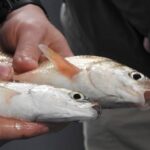 out the Museum’s Reels on Instagram and Facebook if you want to see a video of this operation.) Gillnets look like a long tennis net, anchored by weights along the lake bottom and held vertical by floats. Small fish swim right through, but bigger fish get caught. Whether a DNR biologist or a commercial fisherman is setting the net, they can choose the fish they target by the size of the mesh and the depth of set. >click to read< 19:28
out the Museum’s Reels on Instagram and Facebook if you want to see a video of this operation.) Gillnets look like a long tennis net, anchored by weights along the lake bottom and held vertical by floats. Small fish swim right through, but bigger fish get caught. Whether a DNR biologist or a commercial fisherman is setting the net, they can choose the fish they target by the size of the mesh and the depth of set. >click to read< 19:28
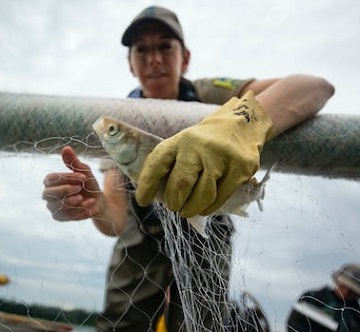
Historic boom in Lake Superior’s herring population could be best in 40 years
Potentially record numbers of lake herring, also called cisco born last spring seem to have survived their first year of life, according to state and federal biologists. At a year old, they should be just large enough that few predators in Lake Superior will now eat them. The stunning boom, not seen since at least 1984, will help sustain both the ecosystem and Minnesota’s commercial fishing industry in one of the world’s greatest lakes for years to come, said Cory Goldsworthy, Lake Superior fisheries supervisor for the Minnesota Department of Natural Resources. “This is what we’ve been waiting for,” Goldsworthy said. “It’s something we’ve never seen before in our careers and may not see again.” >click to read< 09:46
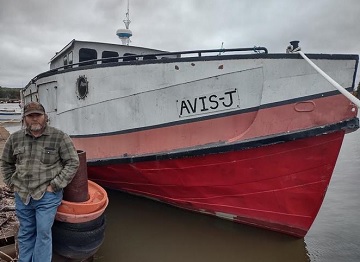
Everett’s Fisheries adds to fleet; Avis J comes aboard for 70th anniversary
For the past 70 years, the crews of the Everett’s Fisheries of Port Wing have plied the frigid waters of Lake Superior, wresting nets full of cisco chubs, lake trout, herring and whitefish from the big lake. A third generation of the Port Wing fishing clan established by Everett Johnson continues to fish and produce the smoked fish and Jeff Johnson intends to keep that tradition alive. To back up that determination, he recently purchased a new fishing boat, the Avis J, to add to Everett’s two-vessel fleet. Well, new to them at least. Photos, >click to read< 18:15

The story of how salmon got to the Great Lakes, told by the man who made it happen
Close to 10 million chinook and coho salmon swim in Lake Michigan, Lake Huron and Lake Superior. There were none when Howard Tanner started as the chief of the Michigan Department of Conservation’s Fish Division in 1964. His boss, Ralph MacMullan, spent much of their first meeting lambasting the fish department for its previous lack of action and dysfunction. Heaps of dead fish were washing up on beaches, the lakes were overly commercially fished and there was little recreational fishing to speak of. He gave Tanner a mandate: “Do something. “And if you can,” he added, “make it spectacular.” By introducing salmon into the Great Lakes in the 1960s, Tanner did just that. >click to read<12:26
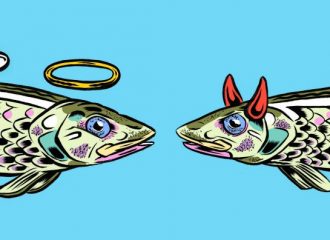
What Happens When Humans Fall In Love With An Invasive Species
Some people miss the glory days of Lester River fishing even when evidence suggests that Lake Superior and the people who rely on it are better off now. Facts, it turns out, can’t always sway emotion or reshape business plans. And these issues are not unique to smelt. All over the world, you’ll find invasive species that are beloved by humans — even as these foreign plants and animals alter or damage the environment. The fight against invasive species is often framed as a technological problem — how do you selectively eliminate a species once it’s made itself at home in an environment? But in reality, it’s also a question of human hearts and minds. And those might be the harder obstacle to clear. >click to read<19:00
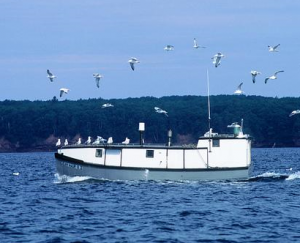
Commercial Fishing Operations Reporting Record Catch Along Lake Superior’s South Shore
Commercial fishing operations near the Apostle Islands of Lake Superior are reporting record numbers of whitefish and a strong recovery of lake trout from a low in the early 2000s. During a presentation to the state’s Natural Resources Board, Craig Hoopman, of Lake Superior whitefish, said he is seeing record numbers of young whitefish and a strong rebounding of lake trout numbers. Hoopman, who chairs the state Department of Natural Resources Lake Superior Commercial Fishing Board, said fishing has been phenomenal so far this year. “We’re averaging between 2,500 and 3,000 pounds of whitefish per day in the traps right now and releasing thousands of sub-legal fish,” said Hoopman. “There’s just multiple year classes of fish.” >click to read<12:38
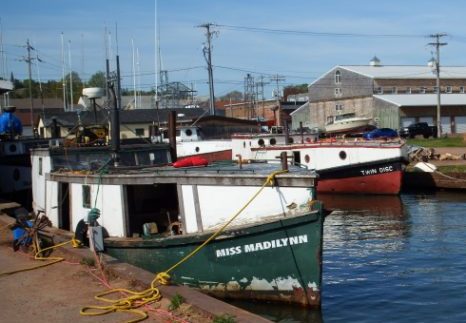
More Fishing Tugs 7
This road trip was partly about seeing more fish tugs, the focus of the next few posts. One of the current hubs of fishing tugs still fishing is the Bayfield Peninsula, jutting out of northern Wisconsin into Lake Superior. Bayfield still had chunk ice in the harbor on May 9! Let’s start out at Bodin Fisheries, and the docks there. Photo’s, >click to read<14:36
Concerns linger over Lake Superior’s historic herring fishery
 Minnesota fisheries managers are concerned about the long term health of the lake herring fishery in Lake Superior. Biologists worry not enough young herring are surviving to sustain the fishery, while at the same time demand for the fish has spiked. Minnesota’s 25 or so commercial fishermen who ply the waters off the North Shore have caught a lot fewer cisco in recent years. The herring, or cisco, fishery is always unpredictable, said Steve Dahl, a commercial fisherman who works out of the Knife River marina on the North Shore of Lake Superior. The last few falls have been tough for Dahl, whose nets have yielded fewer herring at a crucial time of year. This year was different, though. “November was really good, one of the better ones I’ve had,” he said. “Towards the end I sort of got overwhelmed, it was just too much.” Read the story here 11:21
Minnesota fisheries managers are concerned about the long term health of the lake herring fishery in Lake Superior. Biologists worry not enough young herring are surviving to sustain the fishery, while at the same time demand for the fish has spiked. Minnesota’s 25 or so commercial fishermen who ply the waters off the North Shore have caught a lot fewer cisco in recent years. The herring, or cisco, fishery is always unpredictable, said Steve Dahl, a commercial fisherman who works out of the Knife River marina on the North Shore of Lake Superior. The last few falls have been tough for Dahl, whose nets have yielded fewer herring at a crucial time of year. This year was different, though. “November was really good, one of the better ones I’ve had,” he said. “Towards the end I sort of got overwhelmed, it was just too much.” Read the story here 11:21
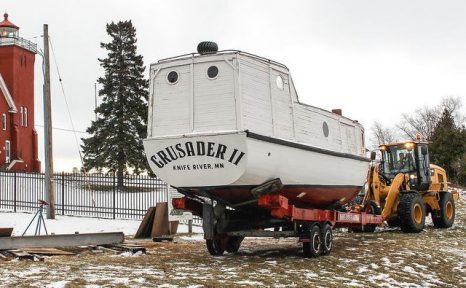
Historical Society donates fishing tug to Knife River
A historical landmark paying homage to the North Shore’s once-thriving commercial fishing industry began its journey Wednesday back to where it was built in 1939. After sitting on the shore of Agate Bay in Two Harbors for 26 years, the fishing tug Crusader II was lifted off its supports, placed on a trailer and hauled off to Knife River in the hopes of restoring it to its former glory. “We are basically giving the Crusader back to the community of Knife River as a Christmas present more or less,” Mel Sando, director of the Lake County Historical Society, said as he watched a crew from Knife River Marina secure the boat to the trailer. Used primarily for catching herring in Lake Superior, the Crusader II was built in Larsmont by Reuben and Helmer Hill and was christened in Knife River by Crown Prince Olav of Norway during his visit to the North Shore, according to the Historical Society. “A group from Knife River approached the Historical Society and asked if they could have the boat back,” Sando said. “We recognize that they are in a much better position to provide good stewardship for the boat.” Read the story here 14:47
What European demand for caviar means for a Great Lakes fish
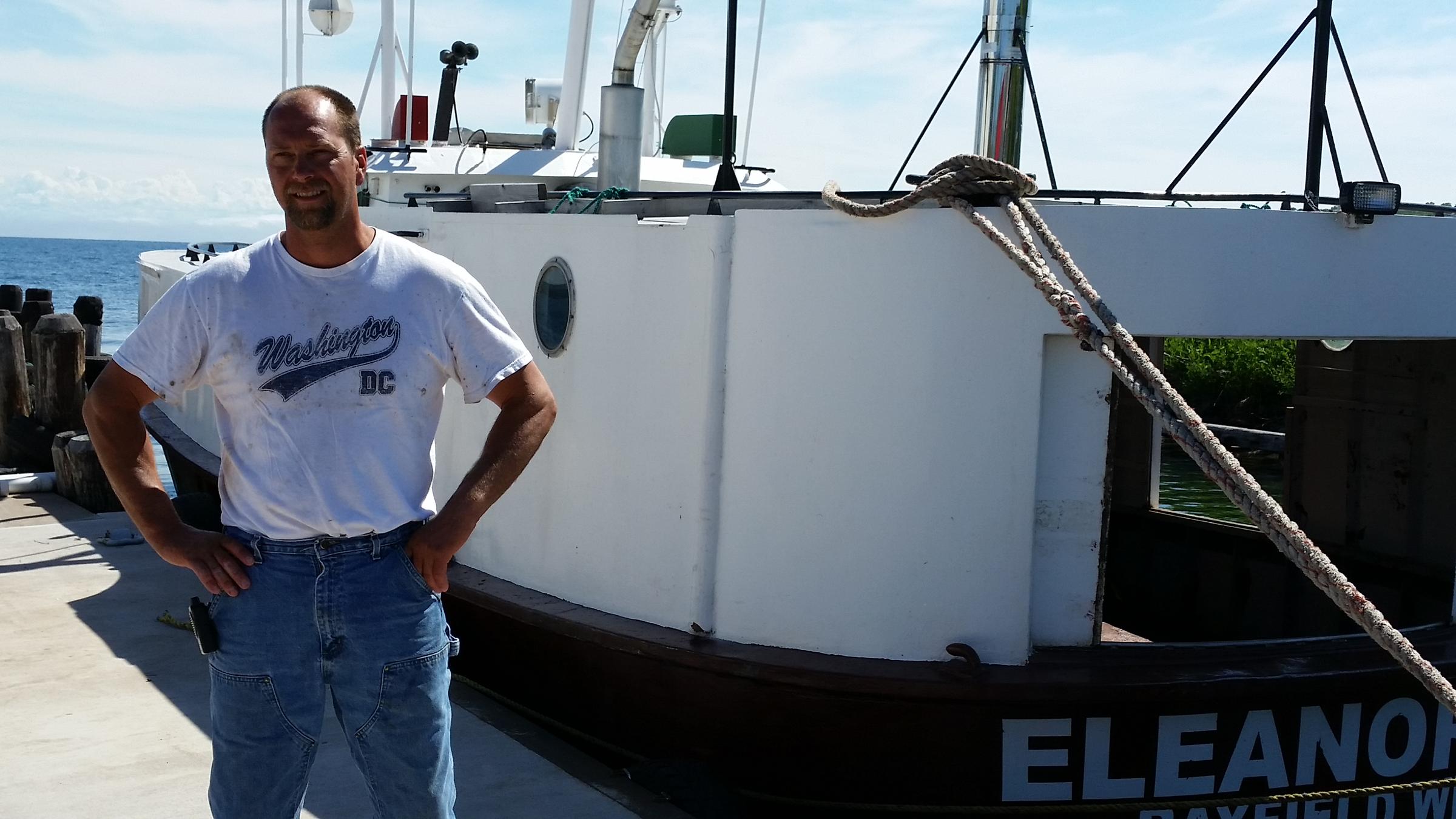 Lake Superior is the largest freshwater lake in the world by surface area, and it has something the other Great Lakes don’t — stable populations of mostly native fish species. But scientists say a key fish in Superior’s food web is now in trouble because of mild winters and an appetite for caviar in Europe. There wasn’t much demand for lake herring until a few years ago. Craig Hoopman says it used to be fed to mink and used as fertilizer. He says around 2007, Scandinavians started buying lake herring eggs, or roe, for caviar. Listen, Read the rest here 12:11
Lake Superior is the largest freshwater lake in the world by surface area, and it has something the other Great Lakes don’t — stable populations of mostly native fish species. But scientists say a key fish in Superior’s food web is now in trouble because of mild winters and an appetite for caviar in Europe. There wasn’t much demand for lake herring until a few years ago. Craig Hoopman says it used to be fed to mink and used as fertilizer. He says around 2007, Scandinavians started buying lake herring eggs, or roe, for caviar. Listen, Read the rest here 12:11
Huge USF&WS investigation in northern Michigan and Northeastern Wisconsi- probe Great Lakes commercial fishing – Video
 The targets included members of numerous tribes in Wisconsin and Michigan, including the Keweenaw Bay Indian Community, the Red Cliff Band of Chippewa Indians and the Grand Traverse Band of Ottawa and Chippewa Indians. The investigation also includes non-natives. Read the rest here 10:35
The targets included members of numerous tribes in Wisconsin and Michigan, including the Keweenaw Bay Indian Community, the Red Cliff Band of Chippewa Indians and the Grand Traverse Band of Ottawa and Chippewa Indians. The investigation also includes non-natives. Read the rest here 10:35






